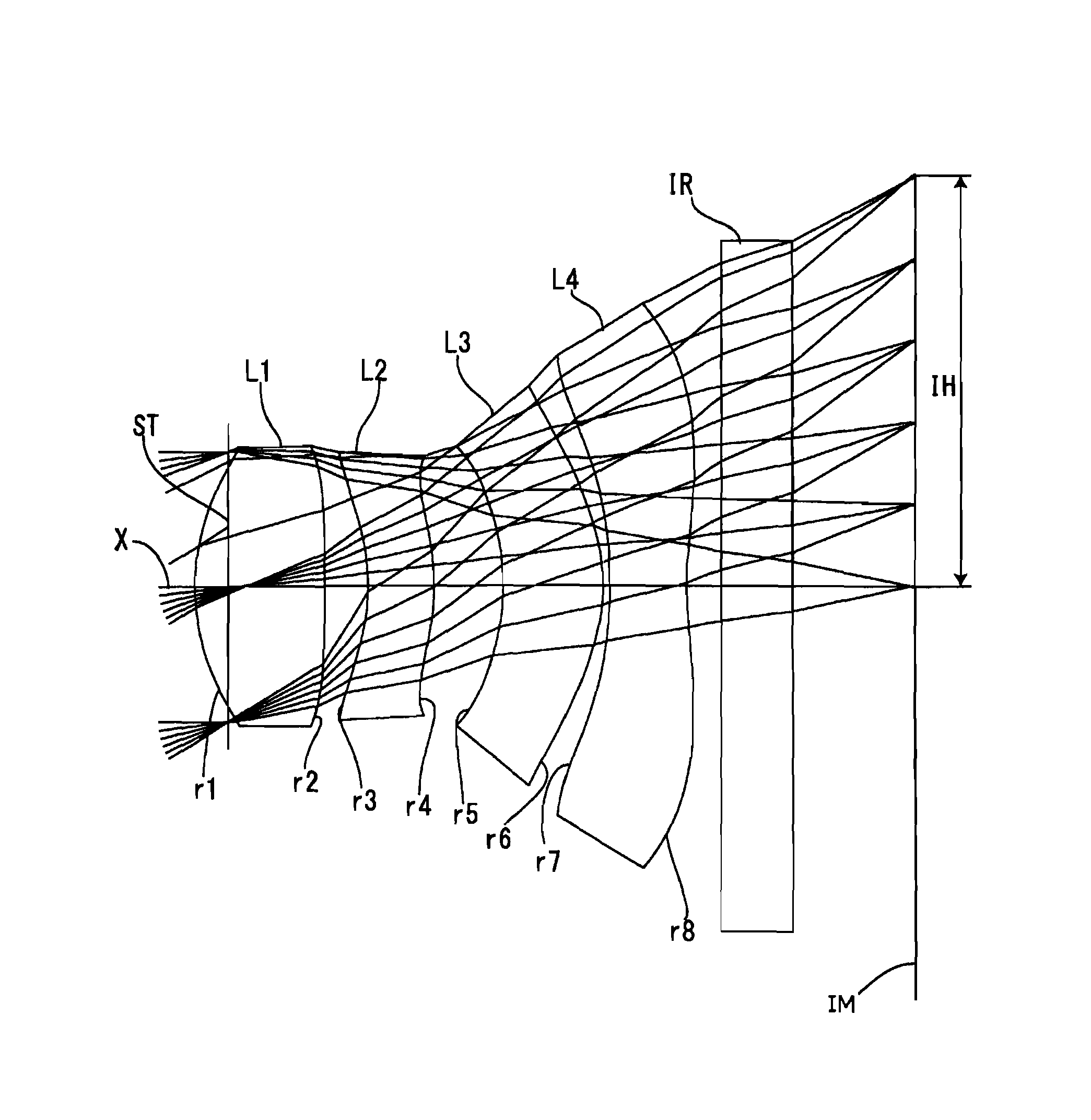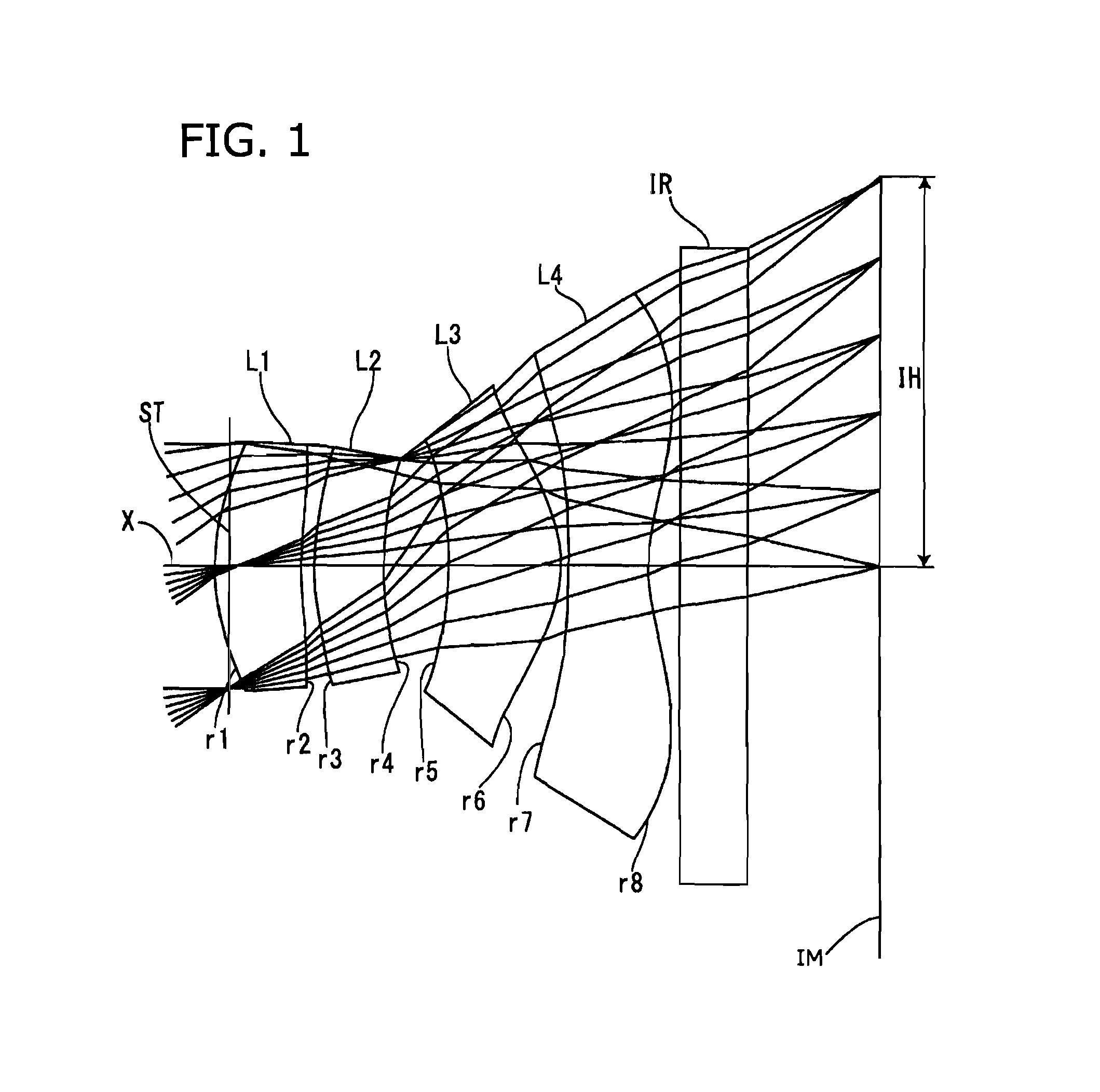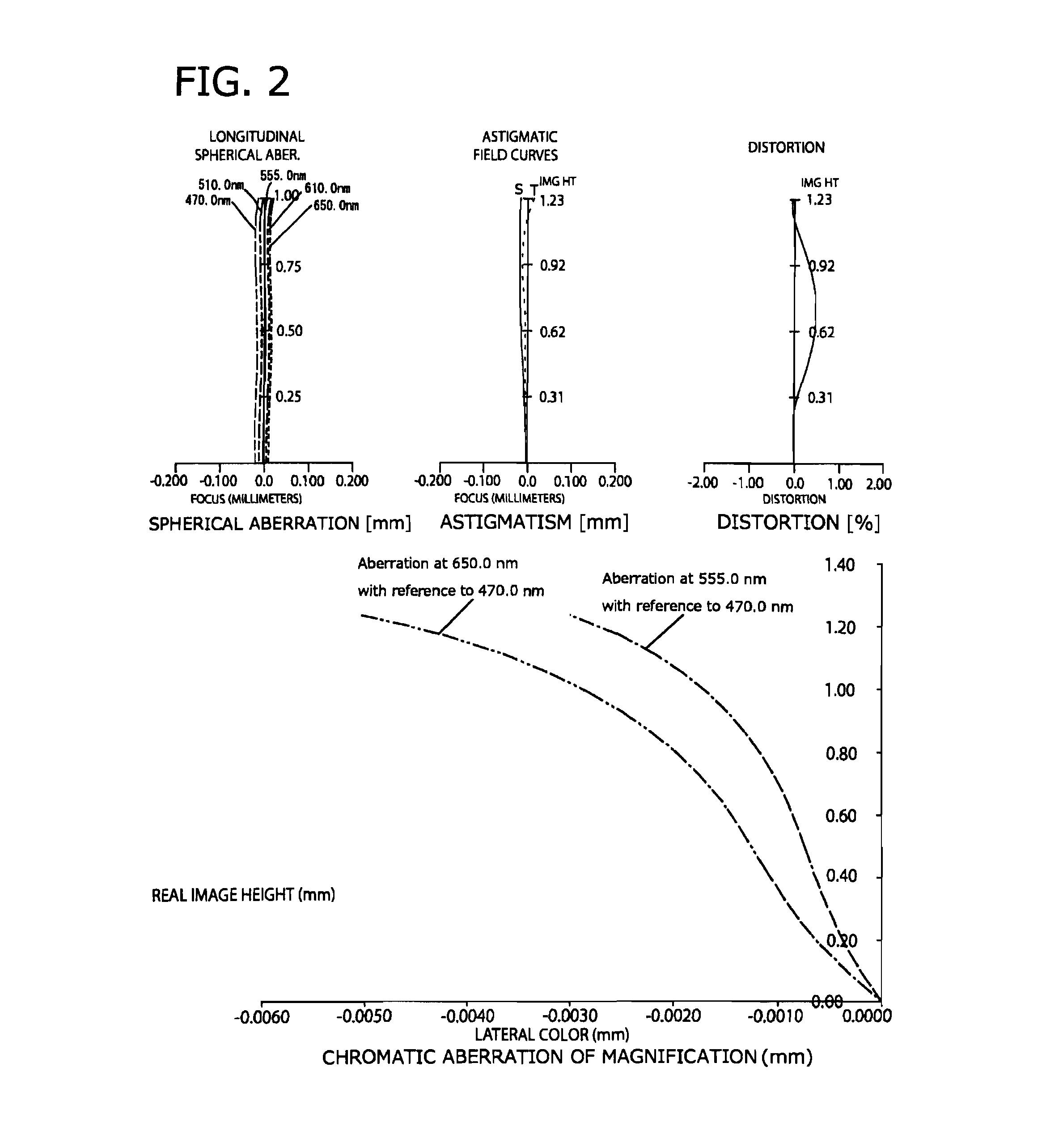Imaging lens
a technology of imaging lens and lens body, applied in the field of imaging lenses, can solve the problems of structurally impossible application of imaging lens, difficulty in achieving the effect of adjusting the f-value, wide angle of view, and small f-valu
- Summary
- Abstract
- Description
- Claims
- Application Information
AI Technical Summary
Benefits of technology
Problems solved by technology
Method used
Image
Examples
first embodiment
[0067]A first embodiment of the present invention will be described in detail referring to drawings. FIGS. 1, 3, 5, 7, 9, 11, 13, and 15 are sectional views of the imaging lenses as Examples 1 to 8 according to the first embodiment respectively.
[0068]In all the examples according to the first embodiment, an aperture stop ST is located in the effective diameter peripheral area of the object-side surface r1 of the first lens L1. A filter IR which includes surfaces r9 and r10 is located between the image-side surface r8 of the fourth lens L4 and the image plane IM. In the figures, X represents an optical axis. In calculation of a distance on the optical axis, the filter IR (r9 and r10) is removed.
[0069]In the first embodiment, all the lens surfaces are aspheric. The aspheric shape of each of these lens surfaces is expressed by Equation 1, where Z represents the optical axis direction, H represents height in a direction perpendicular to the optical axis, k represents conic constant, and...
example 1
[0072]As shown in FIG. 1, in the imaging lens as Example 1, the first lens L1 is a meniscus lens with positive refractive power having a convex surface on the object side near the optical axis X, the second lens L2 is a meniscus lens with positive refractive power having a convex surface on the object side near the optical axis X, the third lens L3 is a meniscus lens with positive refractive power having a convex surface on the image side near the optical axis X, and the fourth lens L4 is a lens with negative refractive power having a biconcave shape near the optical axis X. The image-side aspheric surface r8 of the fourth lens L4 has a pole-change point in a position off the optical axis X. All the lenses are made of the same plastic material.
[0073]The basic lens data of Example 1 is shown in Table 1.
[0074]
TABLE 1Embodiment 1Unit mmf =1.710Fno =2.20ω(°) =39.75IH =1.234Surface DataCurvatureSurfaceRefractiveAbbe NumberSurface No. iRadius rDistance dIndex Ndvd(Object Surface)InfinityI...
example 2
[0079]As shown in FIG. 3, in the imaging lens as Example 2, the first lens L1 is a lens with positive refractive power having a biconvex shape near the optical axis X, the second lens L2 is a meniscus lens with positive refractive power having a convex surface on the image side near the optical axis X, the third lens L3 is a meniscus lens with positive refractive power having a convex surface on the image side near the optical axis X, and the fourth lens L4 is a lens with negative refractive power having a biconcave shape near the optical axis X. The image-side aspheric surface r8 of the fourth lens L4 has a pole-change point in a position off the optical axis X. All the lenses are made of the same plastic material.
[0080]The basic lens data of Example 2 is shown in Table 2.
[0081]
TABLE 2Embodiment 2Unit mmf =1.970Fno =2.45ω(°) =35.64IH =1.234Surface DataCurvatureSurfaceRefractiveAbbe NumberSurface No. iRadius rDistance dIndex Ndvd(Object Surface)InfinityInfinity(Stop)Infinity−0.100 1...
PUM
 Login to View More
Login to View More Abstract
Description
Claims
Application Information
 Login to View More
Login to View More - R&D
- Intellectual Property
- Life Sciences
- Materials
- Tech Scout
- Unparalleled Data Quality
- Higher Quality Content
- 60% Fewer Hallucinations
Browse by: Latest US Patents, China's latest patents, Technical Efficacy Thesaurus, Application Domain, Technology Topic, Popular Technical Reports.
© 2025 PatSnap. All rights reserved.Legal|Privacy policy|Modern Slavery Act Transparency Statement|Sitemap|About US| Contact US: help@patsnap.com



